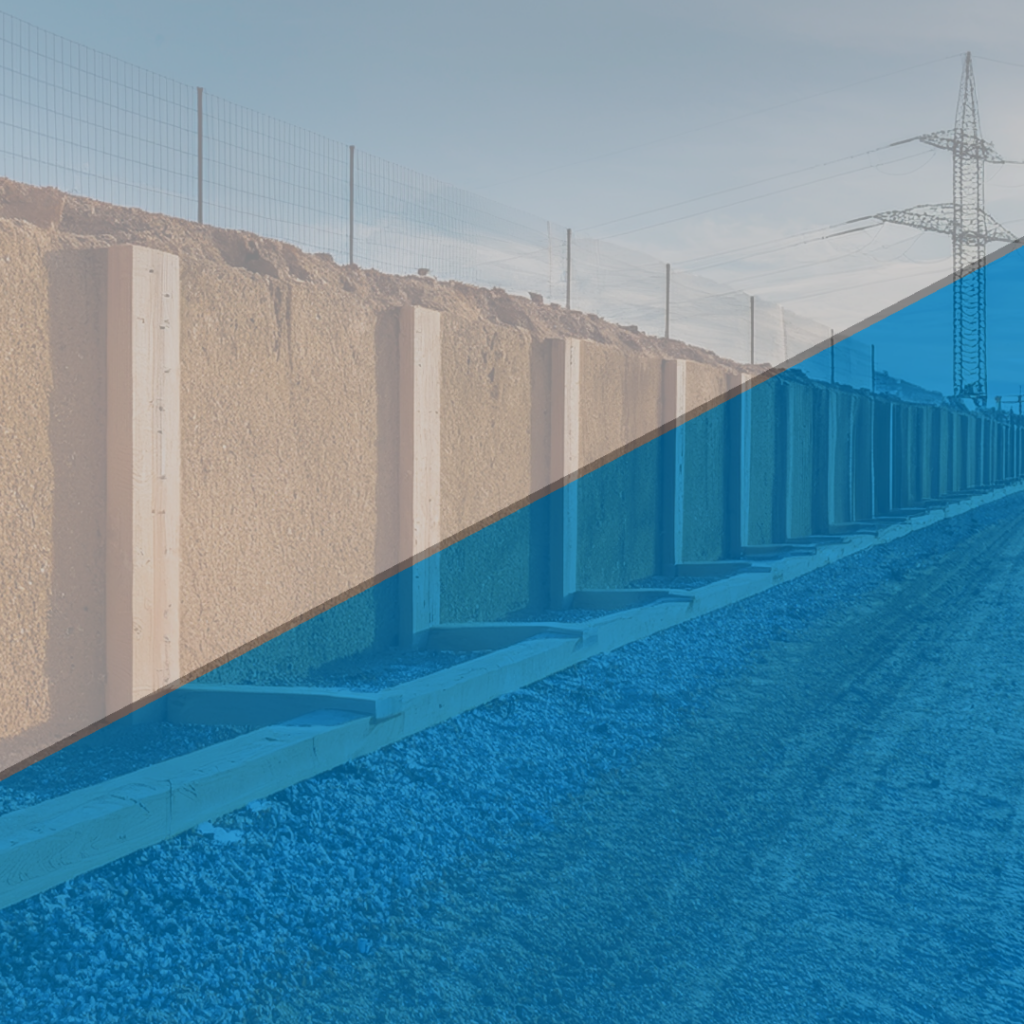
With the what and why of delegated design for geostructural systems defined, the next step is to understand the delegated design benefits and risks when compared to including specialty systems in the initial design process along with other disciplines.
WHAT ARE THE BENEFITS OF DELEGATED DESIGN?
There are many geostructural system options to consider for each individual application. After all, systems such as retaining walls come in many styles and utilize different materials depending on the design and project’s needs.
Innovative solutions
Both from a materials and methods perspective, specialty manufacturers and suppliers have commercial interest in bringing innovative solutions to market. The importance of such innovation, and the potential benefit to end users and the public, cannot be overlooked.
Reduced costs
The specialty supplier or provider can profit handsomely if they provide value alternatives to an end user for a project that was previously constrained by standard designs and construction practices. Similarly, the end user can also benefit from such innovation by receiving a functional alternative at a reduced cost. When it works out well, delegated design can be an absolute win-win proposition.
WHAT ARE THE RISKS AND PITFALLS OF DELEGATED DESIGN?
Nobel prize-winning economist Milton Friedman once said, “There is no such thing as a free lunch.” While there are clear benefits to delegated design, there are also risks and pitfalls to be cognizant of.
Project integration
By nature, delegated design typically lags the rest of the design process and is often performed after the majority of the project has been designed and awarded. Just as geostructural systems come in different designs and styles, they also come with different constraints and consequences.
If the design is delegated too broadly, the specialty supplier may prepare or construct a product that is not well married to the overall project goals and constraints. Encroachment limitations, performance expectations, aesthetic expectations and integration with other aspects of the built environment are just a few issues that may be well understood by the design team but cannot be adequately conveyed to the specialty supplier through the words “wall by others,” or even the best intended of specifications.
Unless multiple systems and their consequences are vetted early in the design process, such an approach can lead to cost overruns due to the information gap between the design team and the delegated supplier, or even performance issues with the final product that the specialty supplier could not have reasonably anticipated.
Unequal or uncommunicated risk tolerance
 The design and construction processes for geostructural systems are substantially less codified than they are for more typical systems like concrete walls or pavement. While there is no such thing as “risk free” design or construction, the understanding of and tolerance for risk is project and end-user specific.
The design and construction processes for geostructural systems are substantially less codified than they are for more typical systems like concrete walls or pavement. While there is no such thing as “risk free” design or construction, the understanding of and tolerance for risk is project and end-user specific.
The absence of a codified process allows significant leeway in the delegated design process. Given the competitive nature of construction bidding, the specialty contractor and, in turn, the general contractor (often unknowingly) may carry a solution in their price that may or may not be in line with the risk expectations of the owner and design team.
Unless the owner or design team have expertise in such systems, they may not clearly understand the level of risk associated with one specialty bid versus another. This may result in the rejection of appropriate solutions due to a misunderstanding of risk, or worse, the acceptance of a risky solution due to a misunderstanding of risk.
Unintended sole sourcing
Specialty solutions do indeed come in a variety of designs and styles. However, the same innovation that led to the establishment of such solutions can be intertwined with the patent and trademark process to create unexpected consequences.
While intended to protect the commercial interest of those who developed such systems or names, trademarks or patents can become a limiting factor when the words associated with them are used too lightly during the bidding process. Owners and design teams must be careful to avoid the specification or use of proprietary systems when the specific proprietary knowledge is not required to serve the project needs, or unintended sole-source bidding can result making it impossible to obtain competitive bids. Given the prevalence and array of tradenames and patents, this can be difficult to avoid.
The next blog in this series will focus on how, with ECS’ support, the gap between benefits and risks of delegated design can be bridged to produce more consistent outcomes.
This is the second post in our second series about geostructural design.
Keep reading for more information.
Series 1 – Geostructural Design:
Part 1: What Is Geostructural Design and Engineering?
Part 2: Unique Aspects of Geostructural Design
Part 3: Why Hire a Geostructural Design Consultant
Series 2 – Contractor Delegated Design:
Part 1: What Is Contractor Delegated Design?
Part 3: Bridging the Gap for Delegated Design
Series 3 – Earth Retaining Systems:
Part 1: Earth Retaining Structures: Who Designs Them… and How Do They Work?
Parts 2 + 3: Coming Soon
ABOUT THE EXPERTS
Karl Higgins, PE, D.GE, earned a bachelor’s and master’s in engineering with a focus on geotechnical engineering.
Doug Chappell, PE, has a bachelor’s in mining engineering with experience in consulting and design-build specialty contracting.
Combined, they have more than 60 years of experience. Together, Doug and Karl lead the geostructural design practice at ECS.
Contact us to discuss your geostructural design needs.
SHARE THIS POST

